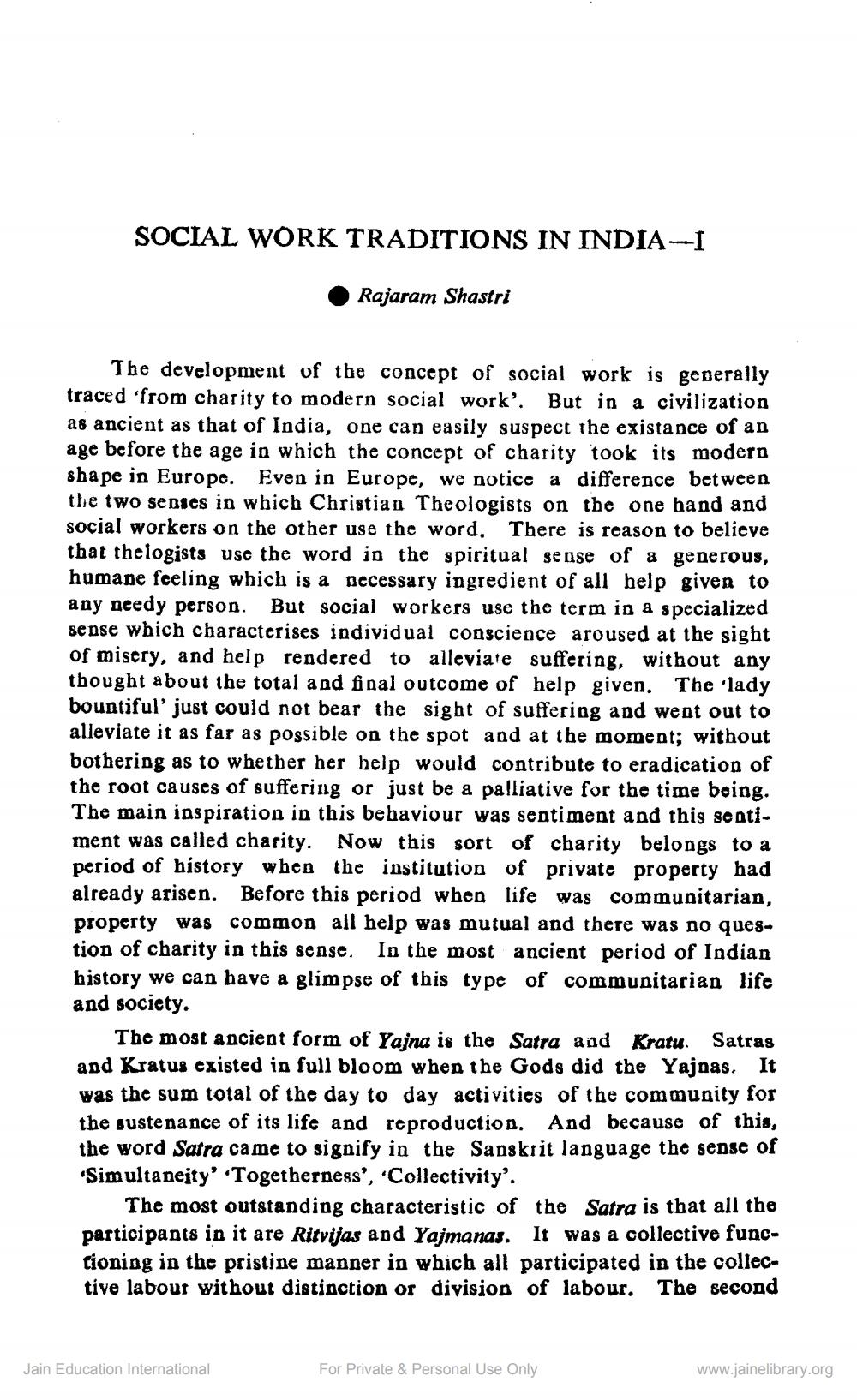________________
SOCIAL WORK TRADITIONS IN INDIA-I
Rajaram Shastri
The development of the concept of social work is generally traced 'from charity to modern social work'. But in a civilization as ancient as that of India, one can easily suspect the existance of an age before the age in which the concept of charity took its modern shape in Europe. Even in Europe, we notice a difference between the two senses in which Christian Theologists on the one hand and social workers on the other use the word. There is reason to believe that the logists use the word in the spiritual sense of a generous, humane feeling which is a necessary ingredient of all help given to any needy person. But social workers use the term in a specialized sense which characterises individual conscience aroused at the sight of misery, and help rendered to alleviate suffering, without any thought about the total and final outcome of help given. The 'lady bountiful' just could not bear the sight of suffering and went out to alleviate it as far as possible on the spot and at the moment; without bothering as to whether her help would contribute to eradication of the root causes of suffering or just be a palliative for the time being. The main inspiration in this behaviour was sentiment and this sentiment was called charity. Now this sort of charity belongs to a period of history when the institution of private property had already arisen. Before this period when life was communitarian, property was common all help was mutual and there was no question of charity in this sense. In the most ancient period of Indian history we can have a glimpse of this type of communitarian life and society.
The most ancient form of Yajna is the Satra and Kratu. Satras and Kratus existed in full bloom when the Gods did the Yajnas. It was the sum total of the day to day activities of the community for the sustenance of its life and reproduction. And because of this, the word Satra came to signify in the Sanskrit language the sense of 'Simultaneity' Togetherness', 'Collectivity'.
The most outstanding characteristic of the Satra is that all the participants in it are Ritvijas and Yajmanas. It was a collective functioning in the pristine manner in which all participated in the collective labour without distinction or division of labour. The second
Jain Education International
For Private & Personal Use Only
www.jainelibrary.org




